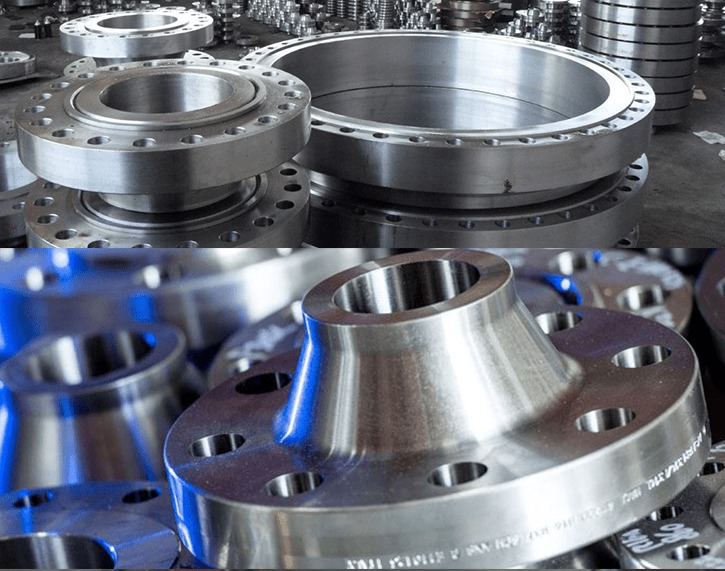
Flanges are integral components in the field of mechanical engineering and industrial applications, serving as critical connectors between pipes, valves, and other equipment. These flat, circular components are designed with precision to facilitate the secure and leak-free joining of various piping systems. Flanges come in a variety of shapes, sizes, and materials to accommodate diverse industry requirements. Their primary function is to provide support, enhance structural integrity, and allow for easy maintenance and disassembly when necessary. Moreover, flanges play a pivotal role in controlling fluid flow and pressure within pipelines, making them indispensable in ensuring the safe and efficient operation of industrial processes.
With their paramount importance, selecting the right type of flange and adhering to proper installation procedures is imperative to maintain system reliability and safety in engineering applications.
| MATERIAL | STANDARD | GRADE |
|---|---|---|
| Alloy Steel | A182 | F5, F9, F11, F12, F22, F91 |
| Stainless Steel | A182 | TP316/316L, TP304/304L, 904, 310, 321 etc. |
| Duplex Super Duplex | A182 | F51, F55, (S31803, S32760, S32750) etc. |
| Nickel Alloy | ASTM B366 | UNS 2200 ( NICKEL 200 ), UNS 4400 (MONEL 400 ), UNS 8825 INCONEL (825), UNS 6600 (INCONEL 600 ), UNS 6601 ( INCONEL 601 ), UNS 6625 (INCONEL 625), UNS 10276 ( HASTELLOY C 276 ). UNS 2201 (NICKEL 201). UNS 8020 (ALLOY 20 / 20 CB 3). |
| Carbon Steel / Low Temp | ASTM A105, A350 | LF2, LF3, LF6 |
| High Tensile Steel | ASTM A707, A694 | L3, L5 / F52, F60, F65 |